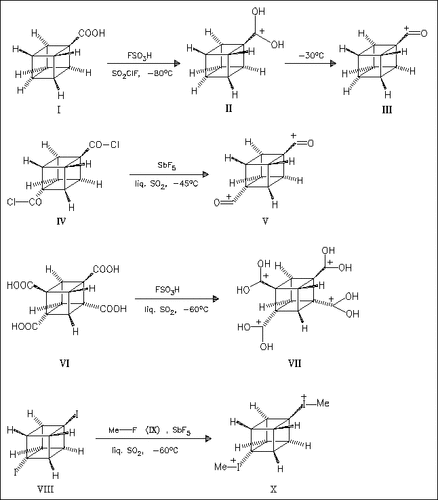ChemInform Abstract: Onium Ions. Part 44. Cubyl Onium Ions: Cubylcarboxonium, Cubylacylium, and Dimethyl Cubyl-1,4-dihalonium Ions.
Abstract
ChemInform is a weekly Abstracting Service, delivering concise information at a glance that was extracted from about 100 leading journals. To access a ChemInform Abstract of an article which was published elsewhere, please select a “Full Text” option. The original article is trackable via the “References” option.
ChemInform Abstract
The cubylcarboxonium ions (II) and (VII), the cubylacylium ions (III) and (V), and dimethyl cubyl-1,4-dihalonium ions such as (X), which are stable under superacidic conditions at low temp., are prepared for the first time and characterized by 13C NMR spectroscopy. In contrast to ( X), the corresponding cubylmonohalonium ions cannot be obtained as stable species.





